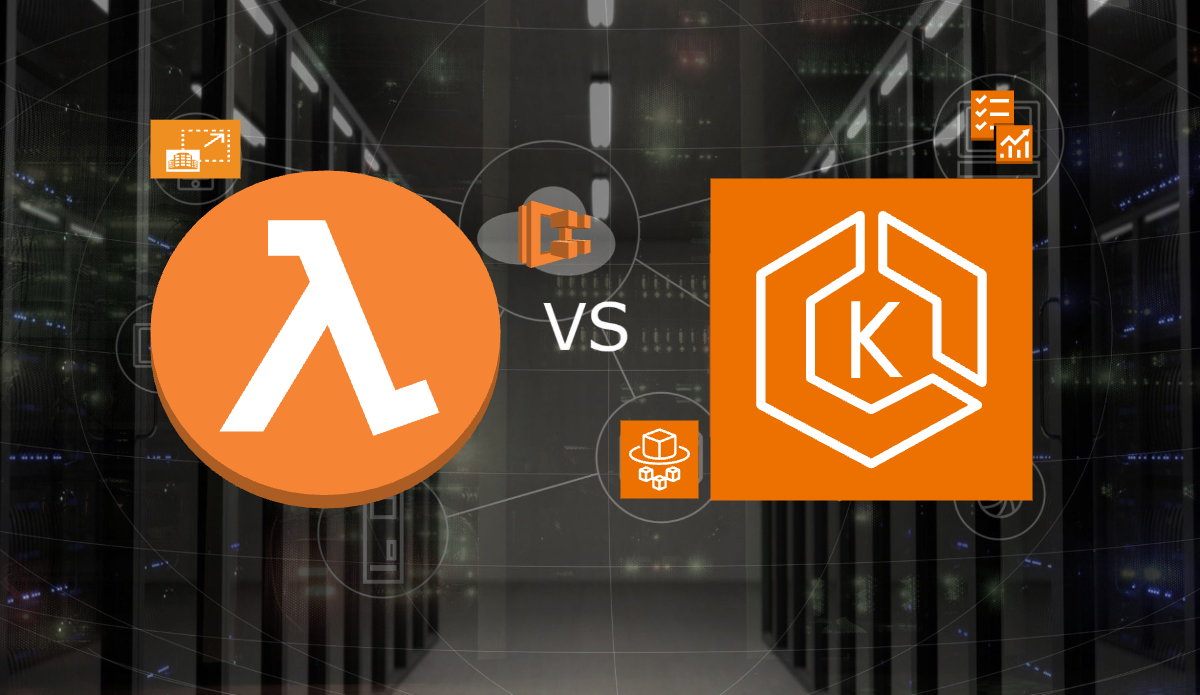AWS Serverless vs. Kubernetes: Choosing the Right Compute Strategy
 Suman Thallapelly
Suman Thallapelly
Modern cloud applications demand flexibility, scalability, and cost efficiency. AWS provides multiple compute options, including AWS Lambda, Amazon ECS Fargate, Amazon EKS, and Amazon EKS with Fargate. Choosing the right approach depends on factors like workload characteristics, operational complexity, and cost considerations. This post compares these solutions to help you make an informed decision.
Compute Options Overview
1. AWS Lambda (Fully Serverless Compute)
AWS Lambda enables running code without provisioning or managing servers. It automatically scales and charges based on execution time and memory usage.
Best for: Event-driven applications, short-lived tasks, APIs, and backend processing.
2. Amazon ECS Fargate (Serverless Containers)
Fargate allows running containers without managing the underlying infrastructure. It scales automatically and integrates with Amazon ECS, simplifying containerized workloads.
Best for: Microservices, batch jobs, and applications requiring containerization without Kubernetes complexity.
3. Amazon EKS (Managed Kubernetes Service)
EKS provides a managed Kubernetes environment while allowing full control over pods, networking, and security.
Best for: Large-scale containerized applications, multi-cloud/hybrid deployments, and applications requiring Kubernetes orchestration.
4. Amazon EKS with Fargate (Serverless Kubernetes)
EKS with Fargate runs Kubernetes pods without managing underlying infrastructure, removing the need to manage EC2 instances while benefiting from Kubernetes orchestration.
Best for: Kubernetes users who want to offload node management while maintaining control over pods and services.
Scalability Comparison
Feature | AWS Lambda | ECS Fargate | Amazon EKS | Amazon EKS with Fargate |
Scaling | Auto-scales instantly based on event triggers | Auto-scales with ECS service-based policies | Requires Kubernetes autoscalers (HPA, VPA, Cluster Autoscaler) | Auto-scales Kubernetes pods, but node scaling is abstracted |
Cold Start | Possible delay due to container initialization | Moderate cold start | No cold start but requires node scaling | Moderate cold start since pods run on Fargate |
Max Capacity | Soft limits on concurrent executions; adjustable | Scales per task and container | Depends on cluster configuration | Limited by Fargate pod limits |
Cost Considerations
Cost Factor | AWS Lambda | ECS Fargate | Amazon EKS | Amazon EKS with Fargate |
Pricing Model | Pay-per-invocation (GB-seconds) | Pay per vCPU and memory per second | Pay for EC2 instances, EKS control plane, and networking | Pay for Fargate pod resources, plus EKS control plane fee |
Cost Efficiency | Cost-effective for sporadic workloads | More predictable for long-running tasks | Higher cost due to infrastructure overhead | Reduces EC2 costs but can be expensive for high pod density |
Free Tier | 1M free requests/month | No free tier, pay per usage | $0.10/hour for control plane + EC2 costs | $0.10/hour for control plane + Fargate costs |
Operational Overhead
Factor | AWS Lambda | ECS Fargate | Amazon EKS | Amazon EKS with Fargate |
Infrastructure Management | Fully managed by AWS | Minimal (no EC2 management) | Requires Kubernetes expertise | No EC2 management, but requires Kubernetes expertise |
Deployment Complexity | Simple, ZIP/archive upload or container-based | Easier than EKS, but requires task definitions | Requires configuring nodes, networking, and policies | Requires managing Kubernetes workloads but offloads node management |
Maintenance | No maintenance needed | Minimal maintenance required | Requires upgrades, monitoring, and scaling tuning | Kubernetes management required but no node maintenance |
Performance Considerations
Performance Factor | AWS Lambda | ECS Fargate | Amazon EKS | Amazon EKS with Fargate |
Startup Time | Can have cold starts | Moderate cold start | No cold start but requires scaling | Moderate cold start |
Latency | Low for short executions | Low to moderate | Low | Moderate due to Fargate scheduling |
Compute Power | Limited by memory settings | Configurable vCPU & memory | Full control over EC2 instances | Configurable pod resources |
Network Performance | AWS-managed, limited control | Good, depends on task setup | Full control over VPC settings | Moderate, depends on Fargate limits |
Choosing the Right Compute Strategy
Choose AWS Lambda if: You need event-driven, auto-scaling, and cost-effective compute for short-lived processes.
Choose ECS Fargate if: You require containerized applications without managing servers but need more flexibility than Lambda.
Choose Amazon EKS if: You need full control over Kubernetes workloads, orchestration, and scalability.
Choose Amazon EKS with Fargate if: You want to use Kubernetes but offload node management while maintaining pod-level control.
Conclusion
AWS offers a spectrum of compute services tailored to different workloads. AWS Lambda excels in simplicity and event-driven applications, ECS Fargate balances flexibility with operational ease, and EKS provides the full power of Kubernetes for large-scale applications. EKS with Fargate offers a hybrid approach, allowing Kubernetes users to reduce infrastructure overhead while keeping workload control. The choice depends on your workload’s complexity, scalability needs, and operational expertise.
Subscribe to my newsletter
Read articles from Suman Thallapelly directly inside your inbox. Subscribe to the newsletter, and don't miss out.
Written by

Suman Thallapelly
Suman Thallapelly
Hey there! I’m a seasoned Solution Architect with a strong track record of designing and implementing enterprise-grade solutions. I’m passionate about leveraging technology to solve complex business challenges, guiding organizations through digital transformations, and optimizing cloud and enterprise architectures. My journey has been driven by a deep curiosity for emerging technologies and a commitment to continuous learning. On this space, I share insights on cloud computing, enterprise technologies, and modern software architecture. Whether it's deep dives into cloud-native solutions, best practices for scalable systems, or lessons from real-world implementations, my goal is to make complex topics approachable and actionable. I believe in fostering a culture of knowledge-sharing and collaboration to help professionals navigate the evolving tech landscape. Beyond work, I love exploring new frameworks, experimenting with side projects, and engaging with the tech community. Writing is my way of giving back—breaking down intricate concepts, sharing practical solutions, and sparking meaningful discussions. Let’s connect, exchange ideas, and keep pushing the boundaries of innovation together!